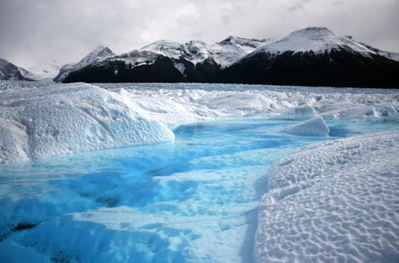Have you wondered what the earth would have been like when the dinosaurs roamed? Environmental geochemistry can help us build a picture of this.
Deep within glaciers and ice sheets, ice cores can help to melt away this mystery. Cold temperatures, low oxygen levels and a lack of UV radiation exposure prevent normal bacterial and cell activity meaning that the samples excavated have essentially been frozen in time.

Environmental chemistry researchers use these samples to build a picture of what the earth was like when the sample was frozen. Understanding the changes that the planet has gone through and how life forms have adapted throughout this time can help us plan and prepare for any potential changes to the climate in the future.
What Do These Secrets Tell Us About Environmental Geochemistry?
Analysis of these samples can reveal a host of information about the sample including:
- when the sample was frozen
- What climate conditions were like at the time
- Levels of pollution at the time of freezing, e.g., CO2 in the atmosphere
Putting all this information together builds a picture of what conditions would have been like at the time the ice formed. Knowing this information and using it to piece together how life forms have adapted throughout periods of change and scientists can predict what might happen to the planet, and its inhabitants, if we go through similar changes in the future. With rising concerns about climate change, this is essential research to learn about how differences in the environment could impact human, animal and plant life.
How Does Ice Reveal These Secrets?
Within the ice samples, scientists will study isotopologues. Isotopolgues are molecules with the same arrangement of atoms however they have a different isotopic composition. In other words, they have the same chemical formula and bonding arrangement of atoms, but at least one atom has a different number of neutrons than the parent. And how does this relate to the Earth sciences? The carbon-oxygen bonds in carbonate minerals are sensitive to their growth temperature (the temperature of the environment), meaning that the proportion of certain isotopologues in these samples can be used to help us produce a “paleothermometer”, i.e. a measurement of temperature on geological time scales. It’s easy to see how this can help with climate change research.
Mass Spectrometry and Environmental Geochemistry
Isotope Ratio Mass Spectrometry (IRMS) is a specialised mass spectrometry technique that measures the relative abundance of isotopes in a sample. The IRMS analysis helps to build a picture of the geographic, chemical and biological history of the sample. Whilst earth scientists often use this to analyse samples and learn about the past in the field of geochemistry, it can also be used in forensics, food safety and other environmental chemistry applications.
IRMS with Isotopx
Isotopx are proud to offer the SIRIX Isotope Ratio Mass Spectrometer for analysing isotopologues and deepening our understanding the Earth’s ever-changing climate, and what that could mean for the future.

With 9 individually moveable Faraday detectors and patented ATONA® technology, SIRIX is a powerful and versatile stable isotope mass spectrometer that can be optimised for the most demanding applications.
For more information about how SIRIX can improve your IRMS analysis, or any of our other mass spectrometers, contact our sales team today who will be happy to help you.
Keep in Touch
If you have enjoyed this article about environmental geochemistry, be sure to follow us on social media using the links below to be the first to find out our latest product and applications news.